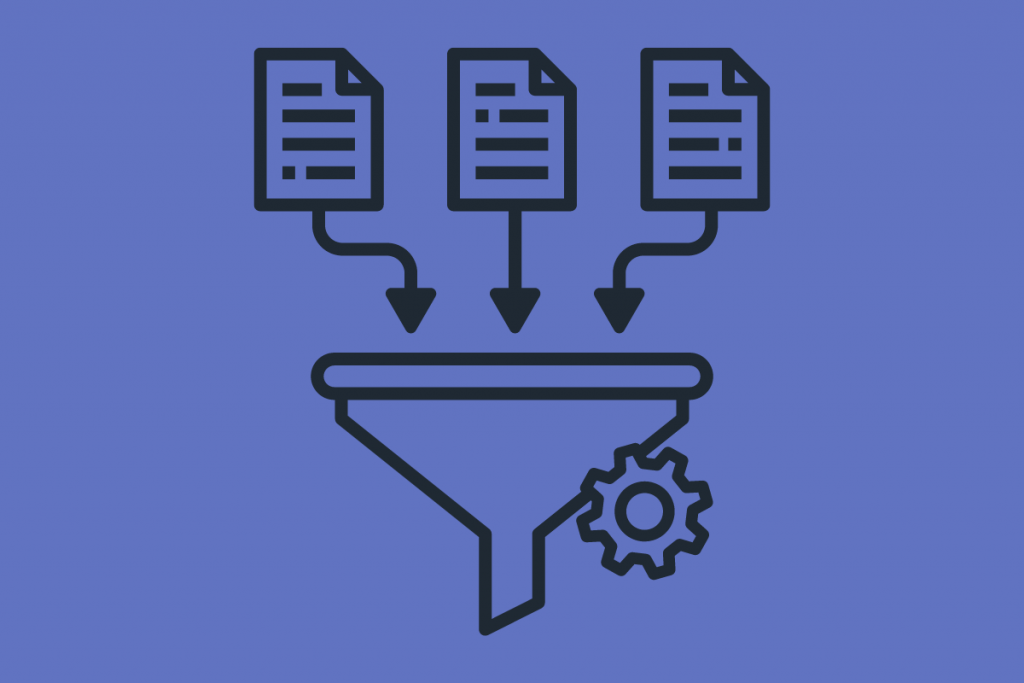How to Write a Case Study For B2B SaaS: 6 Actionable Steps
A B2B case study is used to build credibility, demonstrate functionality, and convince decision-makers.
40% of SaaS companies say case studies are an effective way to increase sales, and 54% of B2B buyers consider case studies before making a purchase.
In this guide, you’ll learn how to write a brilliant case study that builds trust and supports decision-making.
Why are B2B Case Studies Important for SaaS Companies?
B2B case studies adds variety to your SaaS content marketing strategy. They’re great for verifying the value and effectiveness of SaaS products—moving prospects further along the sales funnel. Here’s why all SaaS businesses should make B2B case studies part of their marketing strategies:
Demonstrating functionality
Case studies show how real customers use products to solve specific problems and improve their processes. This practical illustration helps potential customers understand how your software can be applied in their own context.
Building credibility
A B2B case study provide social proof by showcasing the success stories of existing customers. Testimonials and quantifiable results from satisfied clients help to build trust and establish the credibility of your SaaS solution.
Highlighting benefits
Through detailed narratives, case studies highlight the key features and unique benefits of your product. They explain how these features translate into real benefits, like increased efficiency, cost savings, or enhanced performance.
Convincing decision-makers
A B2B case study provide actual proof of the effectiveness of a product—supporting informed decision-making. They showcase tangible results and benefits experienced by other businesses, helping decision-makers see the direct impact on similar companies, and making it easier to envision potential outcomes for their own organization.
Differentiating from competitors
In a crowded SaaS market, it’s essential to stand out. A B2B case study help differentiate your SaaS product by showcasing unique use cases and success stories that competitors may not be able to offer. This differentiation can be essential in convincing potential customers to choose your product over others.
Providing quantifiable evidence
Compelling case studies often include specific metrics and data that illustrate the impact of the SaaS product. This quantifiable evidence, like percentage improvements, time savings, or financial gains, provides compelling proof of the product’s value.
5 ways to Use Case Studies in B2B Marketing
B2B marketing case studies are impactful tools that marketing teams can leverage across various channels to demonstrate the value of their products or services through real customer stories. Case studies allows marketers to showcase tangible outcomes and successes achieved by their clients. Here are five effective ways to use case studies in B2B marketing:
Content marketing
Add case studies to your content marketing strategy by publishing them on your website. They serve as compelling evidence of your product’s success and can attract and educate potential customers who are researching solutions.
Lead generation
Use case studies as lead magnets by gating them behind a form on your website. Interested prospects can provide their contact information in exchange for access to the full case study, allowing you to capture leads interested in real-world success stories.
Sales enablement
Equip your sales team with case studies to use during sales meetings, pitches, and presentations. A B2B case study provide tangible proof of your product’s effectiveness and help build credibility with potential customers, facilitating the sales process.
Email marketing
Incorporate snippets or summaries of case studies into your email marketing campaigns. Highlighting specific challenges, solutions, and outcomes in your emails can capture recipients’ interest and encourage them to explore the full case study on your website.
Social proof
Showcase case studies as social proof on your social media profiles, in ads, and on review sites. Positive customer stories and testimonials can influence purchasing decisions and build trust with prospects who are researching your company.
Case studies not only provide compelling evidence of product effectiveness but also serve as valuable social proof that influences potential customers’ purchasing decisions. By integrating case studies into email campaigns, social media posts, and sales collateral, marketers can effectively engage their target audience and build credibility. This strategic use of customer stories in B2B marketing strengthens relationships with prospects, facilitates lead generation, and supports overall sales efforts.
How to Write a Case Study: Best Practises for B2B SaaS
- Define your goal.
- Define your message.
- Learn about customer’s pain points.
- Ask the right questions.
- Prioritize the problem, solution, and result.
- Create a distribution plan.
1. What is your goal?
Before writing your B2B case study, you need to start by deciding on the goal. Ask yourself what results you want to see from the case study. Your goal will impact the message of the case study, what customer you pick, and what questions you ask. Here are a few examples of goals:
- Increase lead generation: Showcase how a particular business successfully implemented the SaaS solution, leading to a significant increase in qualified leads and sales opportunities.
- Build brand trust: Use the case study to establish your SaaS company as a reliable and trusted provider by demonstrating successful outcomes and satisfied customers.
- Expand market reach: Prospects often look for solutions that have been effective for companies similar to theirs. A B2B case study featuring a business in a new market segment can attract other companies in that segment that face similar challenges.
- Customer retention: Highlighting how other businesses have benefited from the solution over time reassures existing customers that they will continue to derive value from the product.
2. Identify your message
What message do you want the B2B case study to convey to potential customers?
Start by identifying the challenges your existing customers face, how your product helps solve them, and the results achieved. Then, evaluate which of these results you want to highlight in the case study, for example:
- Reduced costs.
- Compliance.
- Efficiency.
- Sustainability.
- Lead generation.
- Customer satisfaction.
- Growth.
Once you have identified the message, it’s time to select a customer who has achieved significant results using your product. Remember to inform the customer how the case study will be distributed, for example, on your company’s website, social media, or in sales dialogues with prospects.
3. Uncover customer pain points
By getting to know your customers and uncovering their pain points, you can ensure that your case study addresses real and relevant challenges faced by your target audience. This approach not only improves the authenticity and credibility of your B2B case study but also increases its effectiveness in attracting and resonating with potential customers.
Here’s how you can effectively uncover ICP pain points:
Conduct surveys
Engage with current customers who fit your ICP criteria. Conduct interviews or send out surveys to gather insights directly from them about the challenges they faced before using your product or service.
Monitor social media and forums
Monitor relevant industry forums, social media platforms, and online communities where your ICP is active. Pay attention to discussions, questions, and complaints related to challenges your product addresses.
Attend industry events and webinars
Participate in industry events, webinars, and conferences attended by your ICP. Listen to presentations, engage in networking, and participate in discussions to gain insights into common pain points and challenges.
Engage with sales and customer success teams
Collaborate closely with your sales and customer success teams. They interact directly with customers and can provide valuable insights into the specific pain points and challenges that customers express.
4. Ask the right questions
The next step is to formulate questions for the customer interview on which your B2B case study will be based.
Focus on open-ended questions that prompt detailed responses. Also, make sure that your questions cover the customer’s challenge, how your product helped solve it, and results.
Avoid leading questions. Instead of “The system helped you increase productivity, save time, and money, right?” ask, “How has the system helped you become more productive, and what have the effects been?”
Conducting a customer interview for a case study is essential because it provides authentic insights and detailed firsthand accounts of the customer’s experience with your product. Interviews allow for concrete examples of how your solution works in practice, making the case study more relatable and compelling.
5. Focus on the problem, solution, and outcome
When creating a compelling B2B case study, the key to making it compelling and relatable is to focus on the customer’s journey, starting with their initial problem, moving through the solution, and ending with positive outcomes.
This approach helps potential customers see how your product can work for them without feeling like they are being subjected to a sales pitch.
1. The problem
Start by painting a clear picture of the customer’s problem. Explain the specific challenges they were facing in their business. For example, they might have been struggling with inefficient processes, high costs, or customer dissatisfaction. Make sure to convey why these issues were critical and needed to be resolved. This sets the stage and helps other businesses relate to the case study, as they may be facing similar challenges.
2. The solution
Next, describe the solution in detail. Instead of simply stating that your product was the answer, explain how it was applied to the customer’s unique situation. Discuss the steps taken to implement the solution and any customization or special considerations that were necessary.
This helps potential customers understand how they might implement your product in their own context. It shows that your product is versatile and can be adapted to meet specific needs.
3. The outcome
Finally, focus on the outcome. This is where you highlight the success the customer achieved by using your product. Use concrete data and specific examples to illustrate the improvements.
For example, you might mention how the customer saw a 30% increase in efficiency, a 20% reduction in costs, or a significant boost in customer satisfaction. These tangible results help potential customers see the real value of your product. They can envision similar outcomes for their own business, making your B2B case study a powerful tool for convincing them of the benefits.
This 3-step-approach makes your case study a valuable resource for potential customers, helping them see how your product can help solve their problems and deliver substantial value.
6. Create a Distribution Plan
Creating a distribution plan for a B2B case study is necessary to ensure it reaches and influences the right audience effectively.
Choose distribution channels based on your target audience
Using channels where your target audience is active is crucial because it ensures that your message reaches the right people at the right time. By understanding where your audience spends their time online, whether it’s LinkedIn, industry-specific forums, or Facebook, you can tailor your distribution strategy to maximize engagement and relevance.
This approach not only increases the likelihood of capturing their attention but also improves the chances of converting them into leads or customers. Essentially, being present where your audience is active allows you to effectively communicate your value proposition and build meaningful connections within your target market.
Use multiple distribution channels
Using multiple distribution channels for your B2B case study is essential since each channel serves a different purpose and caters to different preferences and behaviors of your potential customers.
Diversifying your channels ensures that your case study is accessible to a wider audience. Not everyone consumes information in the same way. Some may prefer reading detailed content on your website, while others might engage more with quick snippets on social media.
Different channels also cater to different stages of the buyer’s journey. For example, someone who discovers your case study through a social media post might be in the early stages of research and looking for high-level insights. On the other hand, a website visitor actively searching for case studies is likely further along in their decision-making process.
Here are examples of distribution channels you can use to promote your B2B case study effectively:
- Company website: Publish the case study on a dedicated landing page or as a blog post on your website. Make sure it’s easily accessible and searchable.
- Email newsletters: Share the B2B case study with your existing email subscribers as part of your regular newsletter updates. Include a compelling teaser and a call-to-action to encourage downloads or reads.
- Social media platforms: Post snippets, key findings, or infographics from the case study on platforms like LinkedIn, and Facebook. Direct interested viewers to the full case study on your website.
- Paid advertising: Use targeted paid advertising campaigns on platforms like Google Ads or LinkedIn Ads to promote the case study to specific demographics or industries.
- Customer advocacy: Encourage the featured customer in the case study to share it with their network, colleagues, and industry contacts through their own social media channels, newsletters, or blogs.
- Sales outreach: Equip your sales team with the B2B case study to use as a valuable sales tool during prospecting calls, meetings, or presentations. It can help build credibility and demonstrate real-world benefits.
Key Takeaways on How to Write a B2B Case Study
For SaaS companies, B2B case studies are invaluable tools that provide concrete evidence of success, build credibility, and support decision-making.
By showcasing features, benefits and quantifiable results, case studies can effectively communicate the value of your SaaS product and drive customer acquisition and retention.
Do you have satisfied customers you’d like to highlight? Message me, and I’ll help you create case studies tailored to your target audience.








